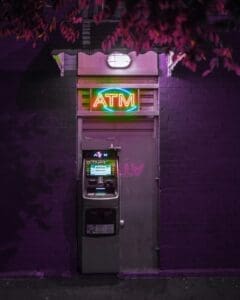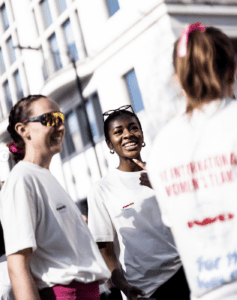TikTok is one of the biggest platforms for fashion trends, and has become a hub for hauls and reviews. The latest trend to take over on the short-form video platform is ‘Dupes’. The term, which is short for duplicates, is the Gen Z abbreviation for knock-off versions of more expensive items. The hashtag #dupe has now been viewed more than 2.7 billion views.
Interestingly, dupe culture is not an entirely new phenomenon. The nature of the fashion industry has always involved reinventing popular trends and themes from the past. In previous decades, fast-fashion brands would more often than not target high fashion companies, and use their designs to ‘inspire’ clothes in a more affordable collection. Nowadays, however, when a particular item or brand goes viral, the aim of a dupe is to recreate the product in its most similar form for a fraction of the price. It is no longer a product of inspiration but a mirror image.
@annaliesedayes Trends are moving super fast! #fashiontok #houseofsunnydupe #charityshop #slowfashion ♬ Face Dance – Funny Tok
Previously, owning an overly obvious knock off was seen as something to feel embarrassed about. With Gen Z’s adoption of this trend, however, finding ‘dupes’ and ‘copies’ is an achievement and now seen as something to be proud of. The ‘hot girl’s don’t gatekeep’ trend, which you can read more about here, is reflective of this new concerted effort on TikTok to reveal your best kept fashion and beauty ‘secrets.’ A great example is when TV presenter Annaliese Dayes proudly took to TikTok to flaunt her very own House of Sunny dupe. The video gained 767,000 views.
Dayes isn’t the only creator to gain success through this trend. Blythe Snyder went viral when she pioneered the parody version, labelled the ‘doop’ trend. Whilst shopping in Target, Snyder started to notice how many items reminded her of higher-end products. She took to TikTok to document this, holding up products like a black tote bag, calling it a ‘prada dupe’ with an exaggerated pronunciation of the word “dupe”. The video quickly went viral, and received over 2.9 million views, with many creators recreating it.

So why is the dupe trend so popular?
When thinking about the main age demographic on TikTok – Gen Z and millennials – it is understandable as to why the trend has taken flight. These groups are less likely to have disposable income to spend on high-end products, and are generally more trend-led when it comes to fashion and beauty. Dupes encourage accessibility to those who may not have the means to purchase the original product, allowing everyone to have access to trending designs regardless of their budget. With the current cost of living crisis in the UK being an ever prevalent issue, dupes allow people to feel involved.
There are, however, challenges that come with dupe culture. Firstly, fashion and beauty trends are ever changing, and therefore the production of dupes requires a quick turnaround. In order to meet such tight deadlines, fast fashion brands often don’t meet environmental and social standards.
According to the Fixing Fashion report, textile and garment production contributes more to climate change than aviation and shipping combined and is responsible for 20 percent of industrial water pollution. Moreover, Fashion Checker reported that 93 percent of fast fashion brands don’t pay garment workers a fair living wage, meaning dupes encourage an exploitative work culture.
@thefifthagency What is dupe culture? We find out in our new trendsettters piece. Thanks @SheerLuxe for the inspo #dupe #dupes #dupemindset #officehumor #officetok #london #agency ♬ original sound – THE FIFTH / CREATIVE AGENCY
Shein, the Chinese fast fashion brand is a key example of this. In an Instagram post by @Highsnobiety, it was reported that Shein adds over 1,000 new styles to its website every single day and has no sustainability initiatives nor transparency around its production and manufacturing processes. Despite this, the fast fashion giant has quadrupled its revenue over the past three years, reaching $15.7 billion in sales, confirming the popularity of cheaper alternatives.
Secondly, there is the issue of intellectual property and who owns the design, and whilst high end brands do not tend to mind when they are ‘copied’, there are many cases of litigation in the mid market territory.
Overall, when it comes to dupe culture, there is clearly a battle of accessibility vs. accountability. It can be argued that it is elitist to assume people can afford designer clothes or always shop ethically, whereas others would argue that the sustainability concerns outweigh the argument of accessibility.






